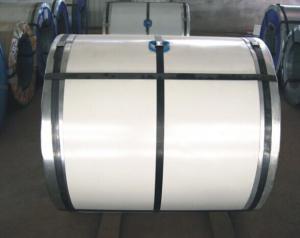When it comes to construction, the strength and stability of a structure are paramount. One of the most effective ways to achieve this is by using steel I beams. These versatile and robust components are designed to provide exceptional support and can be used in a variety of applications. In this article, we’ll explore the benefits of using steel I beams, how they work, and some tips for incorporating them into your next project.
Why Choose Steel I Beams?
Steel I beams are chosen for their strength, durability, and versatility. They are made from high-quality steel, which is known for its ability to withstand heavy loads and resist corrosion. This makes them ideal for use in commercial and industrial settings, where the structure needs to be strong and long-lasting. Additionally, steel I beams are relatively lightweight compared to other materials with similar strength, making them easier to transport and install.
How Steel I Beams Work
The unique ‘I’ shape of these beams provides exceptional strength and stability. The vertical part of the ‘I’, known as the web, resists buckling under compression, while the horizontal parts, known as the flanges, provide support against bending. This design allows the beam to distribute weight evenly across its length, reducing the risk of failure.
Applications of Steel I Beams
Steel I beams are used in a wide range of applications, from residential to commercial and industrial construction. They are commonly used in the following scenarios:
– Foundations and Floors: Steel I beams can support the weight of a building’s foundation and floors, ensuring stability and even distribution of load.
– Roof Structures: They are perfect for creating strong and durable roof structures that can withstand heavy loads, such as snow and wind.
– Bridges: In bridge construction, steel I beams are used to create the main support structure, ensuring the bridge can support the weight of traffic and other loads.
– Multi-Story Buildings: For taller buildings, steel I beams are essential for providing the necessary support to maintain structural integrity.
The Installation Process
Incorporating steel I beams into a construction project involves several steps:
1. Planning and Design: Before installation, a detailed plan and design must be created to determine the size, number, and placement of the beams.
2. Preparation: The construction site must be prepared to accommodate the beams, including ensuring the ground is level and stable.
3. Installation: The beams are then carefully lifted into place and secured, often using bolts or welding.
4. Inspection: After installation, a thorough inspection is conducted to ensure the beams are properly aligned and secure.
5. Ongoing Maintenance: Regular maintenance is necessary to ensure the beams remain in good condition and to identify any potential issues early.
Customizing Steel I Beams
One of the advantages of using steel I beams is the ability to customize them to fit specific project needs. They can be cut, welded, or otherwise modified to suit the unique requirements of a construction project. This flexibility allows for greater creativity and efficiency in design.
Sustainability and the Environment
Steel I beams are not only strong and durable but also environmentally friendly. Steel is a recyclable material, and using steel I beams can contribute to a more sustainable construction process. By choosing steel, you’re supporting a material that can be reused and repurposed, reducing waste and the environmental impact of construction projects.
The Future of Steel I Beams in Construction
As construction techniques and materials continue to evolve, steel I beams remain a popular choice for their strength, versatility, and sustainability. With ongoing advancements in steel production and fabrication technologies, we can expect to see even more innovative uses for these beams in the future.
Conclusion
In conclusion, steel I beams are an essential component in modern construction. Their strength, durability, and adaptability make them ideal for a wide range of applications. Whether you’re working on a small residential project or a large commercial development, incorporating steel I beams can enhance the structural integrity and longevity of your construction. By understanding their benefits and proper installation techniques, you can make informed decisions about using steel I beams in your next project.

